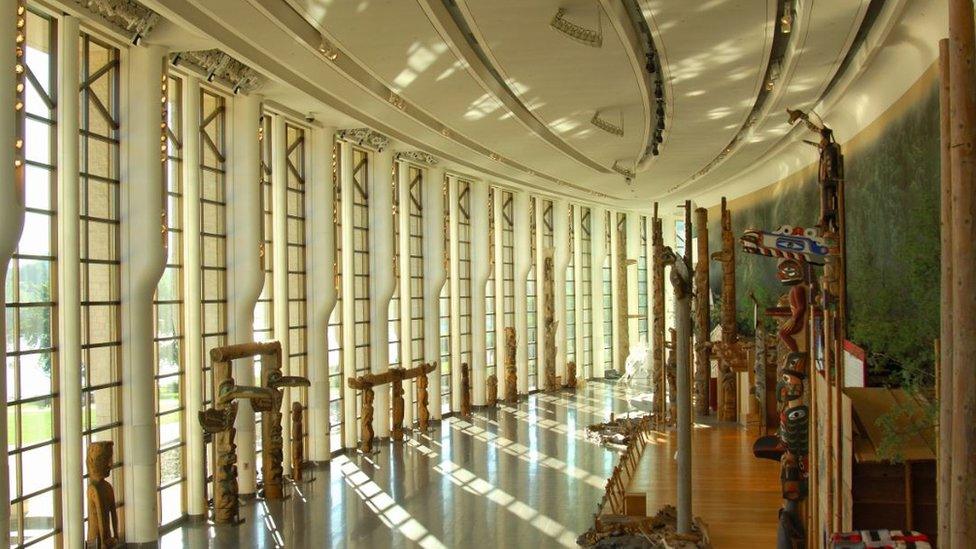Museum to return First Nation skulls
- Published

The skulls will be given to the Canadian Museum of History
The remains of two members of the Beothuk people are to be returned to Canada from Scotland.
The skulls of chief Nonosbasut and his wife Demasduit were acquired by the National Museum of Scotland in the 1850s.
A request came from the Canadian government last year was given legal endorsement by the Scottish government.
The museum's board of trustees will now transfer the remains to the Canadian Museum of History in Ottawa.
The Beothuk were indigenous to what is now Newfoundland, but almost all had died out by the early 19th Century.
The remains were discovered in a tomb by William Eppes Cormack who was born in St John's, Newfoundland in 1796 and educated at Glasgow and Edinburgh universities.
In 1828, he sent them to his mentor, Prof Robert Jameson, for the collection of the University Museum in Edinburgh.
This collection was later transferred to the Industrial Museum of Scotland (now the National Museum of Scotland) in the 1850s.
'Careful consideration'
Dr Gordon Rintoul, director at National Museums Scotland said: "We are pleased to have reached this agreement and to be able to transfer the remains of these two Beothuk people to the country where they lived and were buried.
"The board of trustees of National Museums Scotland considered a formal request received from the Canadian Government in July 2018 to transfer the remains of two Beothuk people, Nonosabasut and Demasduit, from National Museums Scotland to the Canadian Museum of History, Ottawa.
"Following careful consideration in line with our human remains in collections policy, the board approved the request and we have subsequently sought and now received the required approval from the Scottish government. We have informed the Canadian government and the Canadian Museum of History and are now making arrangements."
The Beothuk remains have not been on display at the National Museum of Scotland
It is not the first time Scottish authorities have been asked to return historical items.
In 2016, councillors in the Borders returned a Maori war flag to New Zealand after an approach from the New Zealand museum and descendants of "key parties" involved in the battle during which it was taken.
The flag was captured by Crown forces from a Maori tribe during the Battle of Omaruhakeke in 1865.
And in 1999, a relic believed to have been worn by a Sioux warrior killed in the 1890 Wounded Knee massacre, external was returned to its native land from Scotland.
The ghost dance shirt was officially handed back to descendants of the battle victims at a special ceremony in South Dakota.
The relic was displayed for more than a century in the Kelvingrove Art Gallery in Glasgow after George Crager, a member of Buffalo Bill's Wild West Show, gave it to the museum in 1891.
- Published2 June 2017